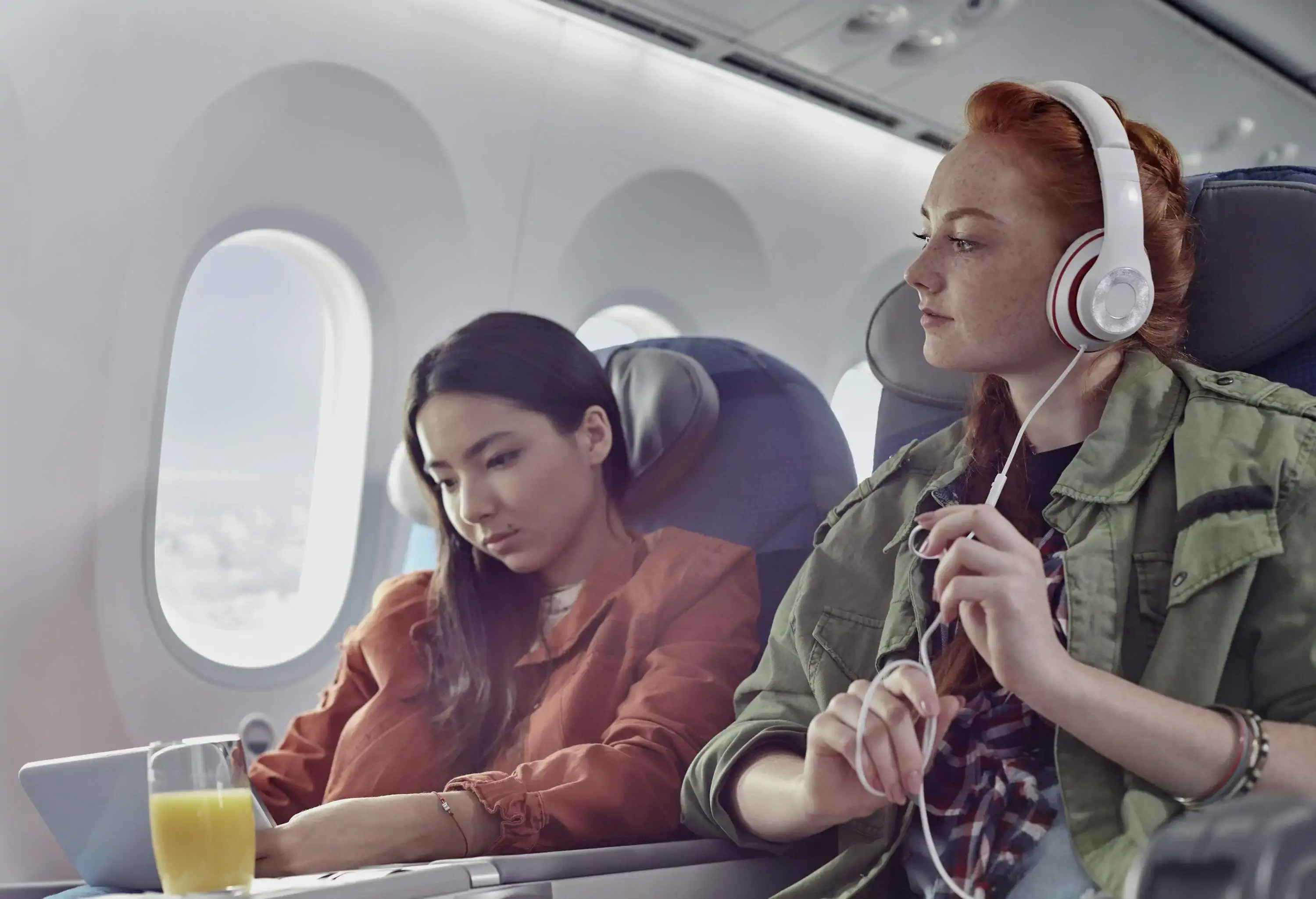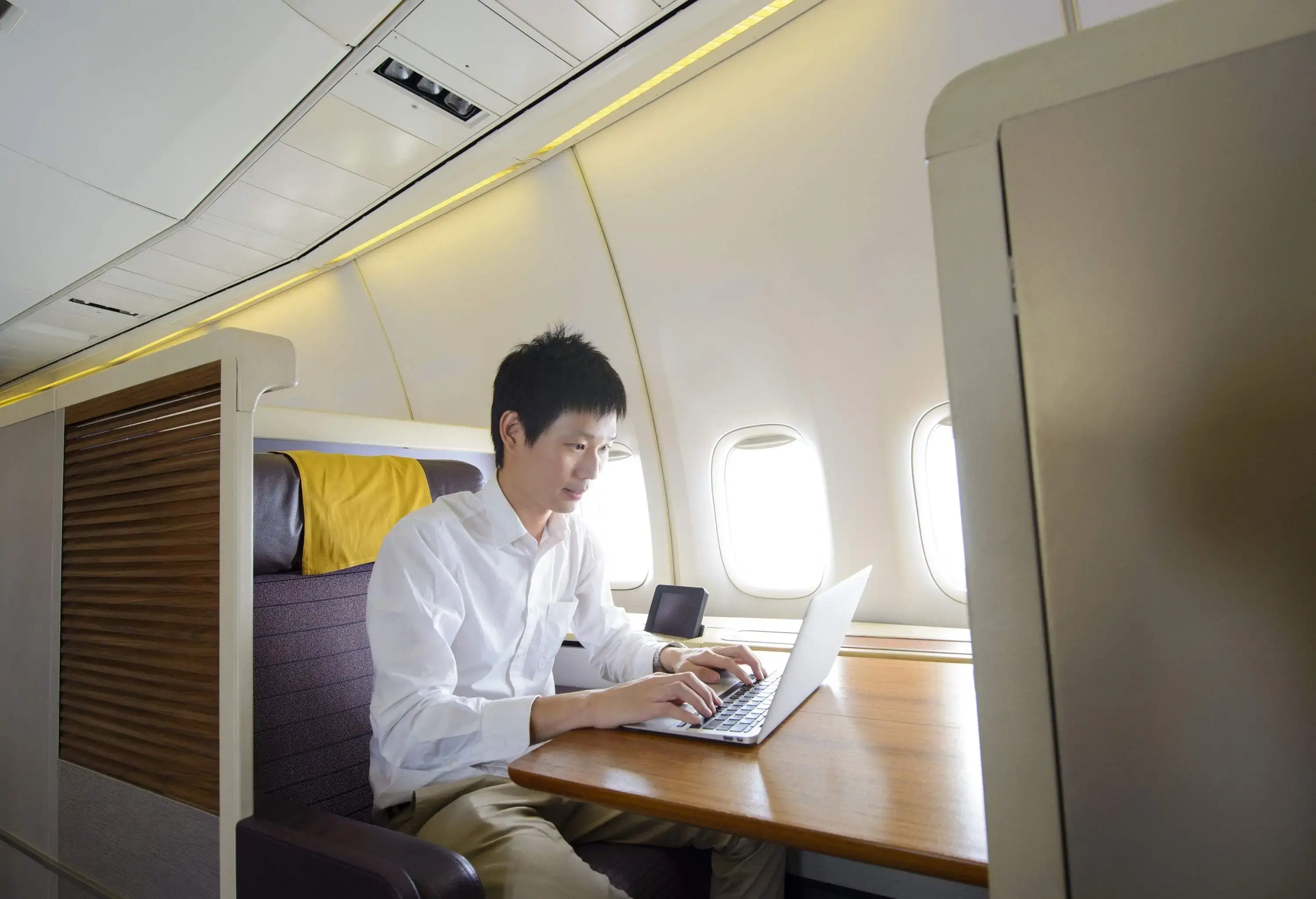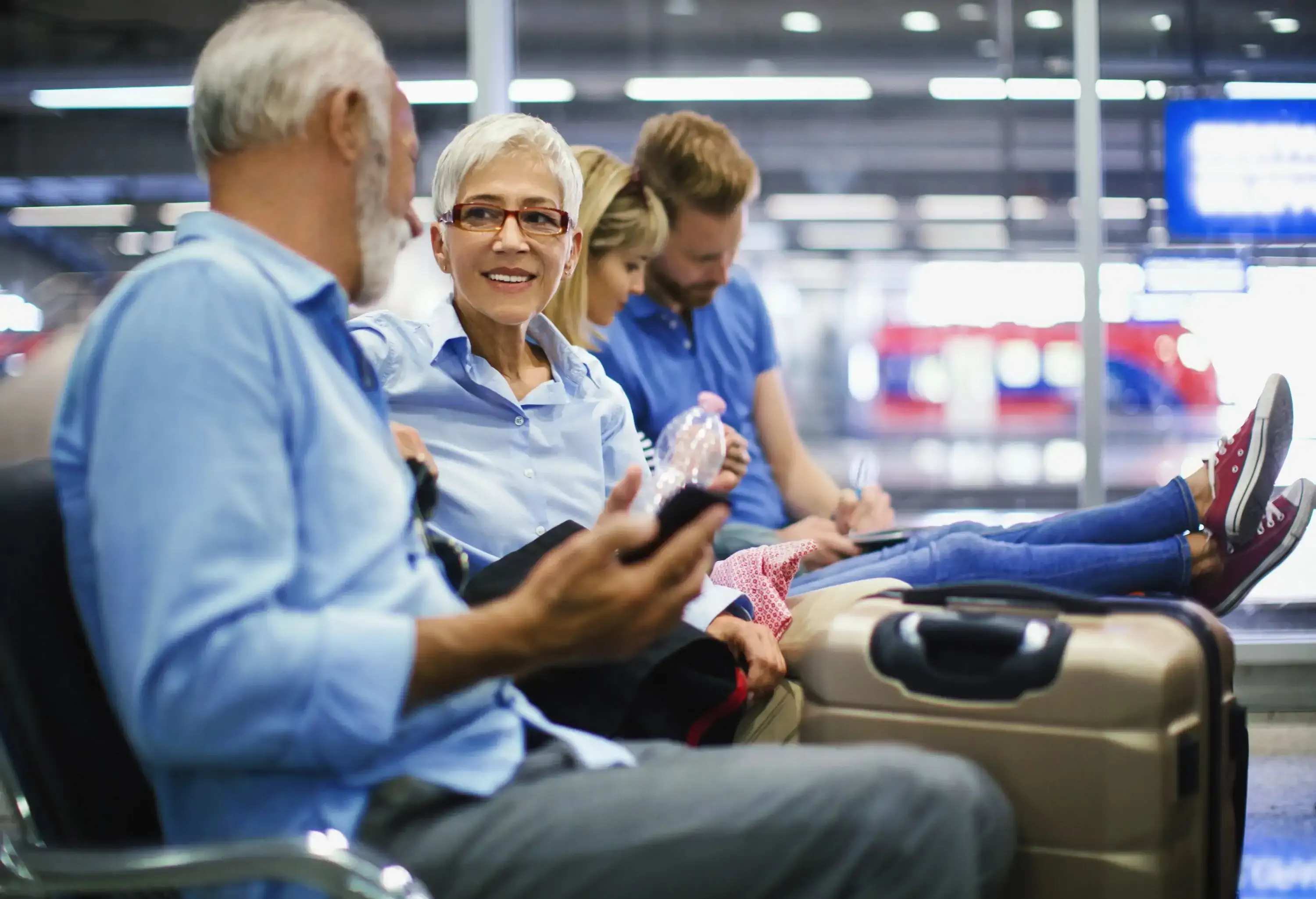Summer travel season is in full swing. If you’ve been to an airport in the past few weeks, you have no doubt witnessed the uptick in travel traffic.
This summer is slated to be record-breaking for U.S. air travel. More than 2.4 million passengers are expected to fly daily on U.S. airlines from June 1 to Aug. 31, up 104,000 passengers or 4.5 percent from 2014, according to trade organization Airlines for America.
Published airline schedules show Canada, Mexico, the United Kingdom, Germany and Japan are the top five nonstop international destinations from the United States, according to Airlines for America. And year over year, airlines are adding the most seats to the marketplace for flights between the U.S. and Mexico, the United Kingdom and China.
Here are some tips on how to keep calm during the busiest summer in U.S. air travel.
Before you fly
Airlines for America projects approximately 222 million passengers are expected to fly on U.S. airlines from June 1 to August 31. But there are ways that you can make your airport experience run more smoothly.
- Apply for programs like Transportation Security Administration’s Pre✓ and Customs and Border Protection’s Global Entry, which allow travelers to benefit from expedited security screenings.
- Ensure you have a government-issued photo ID, such as a driver’s license or passport and that it is valid through the dates of your trip. When traveling to an international destination, note that some countries require passports to be valid for at least six months upon entry.
- If your starting point or destination is in proximity of more than one airport, check fares and schedules for each one and determine which best meets your needs.
- If you did not enter your loyalty rewards or Known Traveler Numbers at the time of booking, do so during online check-in. This is also another opportunity to sign up for travel information and notifications sent by text, email or voicemail from your airline.
- Save your airline’s customer service number in your phone in case you need to contact a representative for assistance.
- Arrive at the airport early enough to be able to park your car, check your luggage, get your boarding pass and get through the checkpoint. 90 minutes in advance of departure is advisable, longer for international flights.
Pack smart
Here is some savvy advice for checked baggage from TSA:
- When locking your checked bags, use a TSA Accepted & Recognized Lock. Bags may need to be opened during the screening process. If your baggage needs to be opened and inspected, TSA may have to break unrecognized locks to access your bags. TSA will not reimburse passengers for unrecognized locks broken as a result of the security screening process.
- Do not pack jewelry, cash, computers, electronics or fragile items in your checked baggage.
- Pack shoes, boots, sneakers and other footwear on top of other contents in your luggage.
- Avoid over packing your bag so that your items do not spill onto the ground if the bag is opened for inspection. The screener will be able to easily reseal your bag too.
- Avoid packing food and drink items in checked baggage. If you must pack liquids or perishible items in your luggage, seal them in plastic bags to protect the contents of your luggage from leaks and spills.
- Don’t stack piles of books or documents on top of each other; spread them out within your baggage.
- To avoid loss or confusion between your bag and that of another passenger, place identification tags with your name, address and phone number on all of your baggage, including your laptop. It is a good idea to place an identification tag inside your baggage as well.
- Before arriving at the airport, check with your airline or travel agent to determine the airline’s baggage policy, including number of pieces you can bring and size and weight limitations.
- Place personal items such as toiletries and toothbrushes in clear plastic bags to reduce the chance that a TSA officer will have to handle them.
- Do not pack wrapped gifts. They may need to be opened for inspection.
- Be sure your baggage is clearly labeled with your name and current address, phone number and email address.
- Many bags look alike. Mark your checked suitcase with a bright luggage tag or other identifying feature. Consider buying luggage that is any color but black, which is the most popular color.
- Special items like golf clubs are usually not placed on the luggage carousel; look instead along the baggage claim area wall.
Navigating the security checkpoint
Some 31 million travelers (332,000 per day) are expected to fly on international flights from June 1 to August 31, a record high, according to Airlines for America. With so many travelers flying the friendly skies, here are some tips for swiftly moving through security courtesy of TSA:
- If you are traveling with children, place strollers and car seats on the scanner belt.
- Babies should be carried through a walk-through metal detector by a parent or guardian.
- Passengers who are only traveling with carry-on bags will need to have them screened at the TSA checkpoint. TSA will screen carry-on bags; however, it’s up to each individual air carrier as to whether the baggage fits the size restrictions for your flight. Please check with the air carrier prior to proceeding through the security checkpoints.
- Always keep your belongings in sight during screening. You are responsible for your property as it proceeds through the screening process.
- Your 3-1-1 bag of liquids, gels and aerosols must be removed from your checked bag and placed in a bin.
- Laptops also need to be removed from their carrying cases and placed in a bin separate from their cases.
- Make sure that you do not have any prohibited items in your checked baggage. If you are unsure if an item is permitted through the TSA checkpoint, check the TSA’s “When I Fly, Can I Bring My…?” feature, which allows travelers to type in an item to find out immediately if it can be placed in a carry-on bag, checked bag, either or neither. TSA also has My TSA, a free downloadable app that has the same feature.
- TSA Cares is a telephone helpline to assist travelers with disabilities and medical conditions. The TSA recommends that passengers call 1-855-787-2227 (toll free) 72 hours ahead of travel for information about what to expect during screening and receive answers to questions about screening policies and procedures. The hours of operation for the TSA Cares help line are Monday through Friday from 8 a.m. to 11 p.m. Eastern Time and weekends and holidays from 9 a.m. to 8 p.m. EST.
In the air
Airlines are increasing the number of available seats by 126,000 per day, or 4.6 percent, from June 1 to August 31, according to Airlines for America. Here are some tips for keeping comfy at 30,000 feet:
- Dress in layers to ensure comfort onboard as cabin temperatures vary.
- Some airlines offer amenity kits for purchase, which include items like eye masks, pillows, blankets and slippers.
- Save money by packing your own snacks like sliced veggies and fruit, granola bars and pretzels.
- Stay hydrated; drink plenty of water before, during and after your flight.
- Once the captain has turned off the fasten seatbelt sign, be sure to get up and stretch periodically during the flight, particularly on long-haul flights.
Avoid extra fees
“Extras” like checked bags, select seats, in-flight snacks and pillows can add up and cost you. Here are some tips on how to avoid paying extra fees:
- Avoid checked baggage fees by carrying on luggage or signing up for an airline credit card that offers free checked baggage.
- Get a little extra space for free by choosing a window seat, which provides a few extra inches of arm space or request an exit row seat during check-in.
- While some carriers like JetBlue still serve complimentary in-flight snacks, many do not. Pack your own portable snacks like chips, trail mix, dried fruit and raw veggies.
- Pack a small travel pillow and blanket.
- Join a frequent flyer program and try to accumulate points on one airline to earn membership status with that airline. Travelers who have gained status with an airline are typically allowed to board first, after travelers with special needs and those traveling with children.
Tips for flying with kids
13 of the 15 busiest air travel days of the year fall in the summer months, according to Airlines for America. When children are on summer break, travel volume picks up in the U.S., and with multigenerational travel on the rise, it’s important to plan accordingly. Here are some tips for traveling with children:
- The TSA is required to screen everyone, regardless of age, in order to ensure the security of all travelers. The TSA will not ask travelers to do anything that will separate them from their child. Children 12 and under can leave their shoes on during screening.
- Babies should be carried through a walk-through metal detector by a parent or guardian.
- All carry-on baggage, including children’s toys, bags and items, will be screened. Let your child know that their blanket, favorite stuffed animal or toy will have to go through the X-ray machine and then will be returned to them.
- All child-related equipment that can fit through the X-ray machine should go through the X-ray machine. Examples include: strollers, umbrella-strollers, baby carriers, car and booster seats, backpacks and baby slings. If possible, collapse or fold strollers and any other child-related equipment while in the queue. Put any items in the stroller pockets or baskets, in a carry-on bag or in a plastic bin for inspection. If any equipment will not fit through the X-ray machine, security officers will visually and physically inspect it.
- An increasing number of airports have amenities for families, from special family security lanes to family restrooms and nursing rooms to play areas. Check out our Tips for Nursing Moms for advice on nursing while traveling.
- Ask the airline if they offer children’s meals.
- Bring ample activities for your child, like coloring books, electronic tablets and games. Some airlines also offer complimentary activity packs inflight.
- Bring an extra set of clothing for babies and toddlers. Pack more formula, diapers, medicine and food than you anticipate needing in case of flight delays.
- To help ease ear pain inflight, consider nursing your child during takeoff and landing. For older children, give them a lollipop, a piece of hard candy to suck on or crewing gum during take off and landing to ease ear pressure.
Pass the time
Here are some tips to help pass the time during flight delays or cancellations.
- Check out our Kids Airport Diversion Guide for ways to entertain your children (and you!) during lengthy layovers.
- When flights are delayed or cancelled; speak to the airline about switching to other flights that may be headed to the same destination.
- Some airlines offer free meal vouchers for flights that are excessively delayed. As soon as your flight is delayed, speak with airline representatives to determine what they are offering to passengers on your flight.
(Main Image: bpprice, Nevada sunset via Flickr CC BY 2.0)





